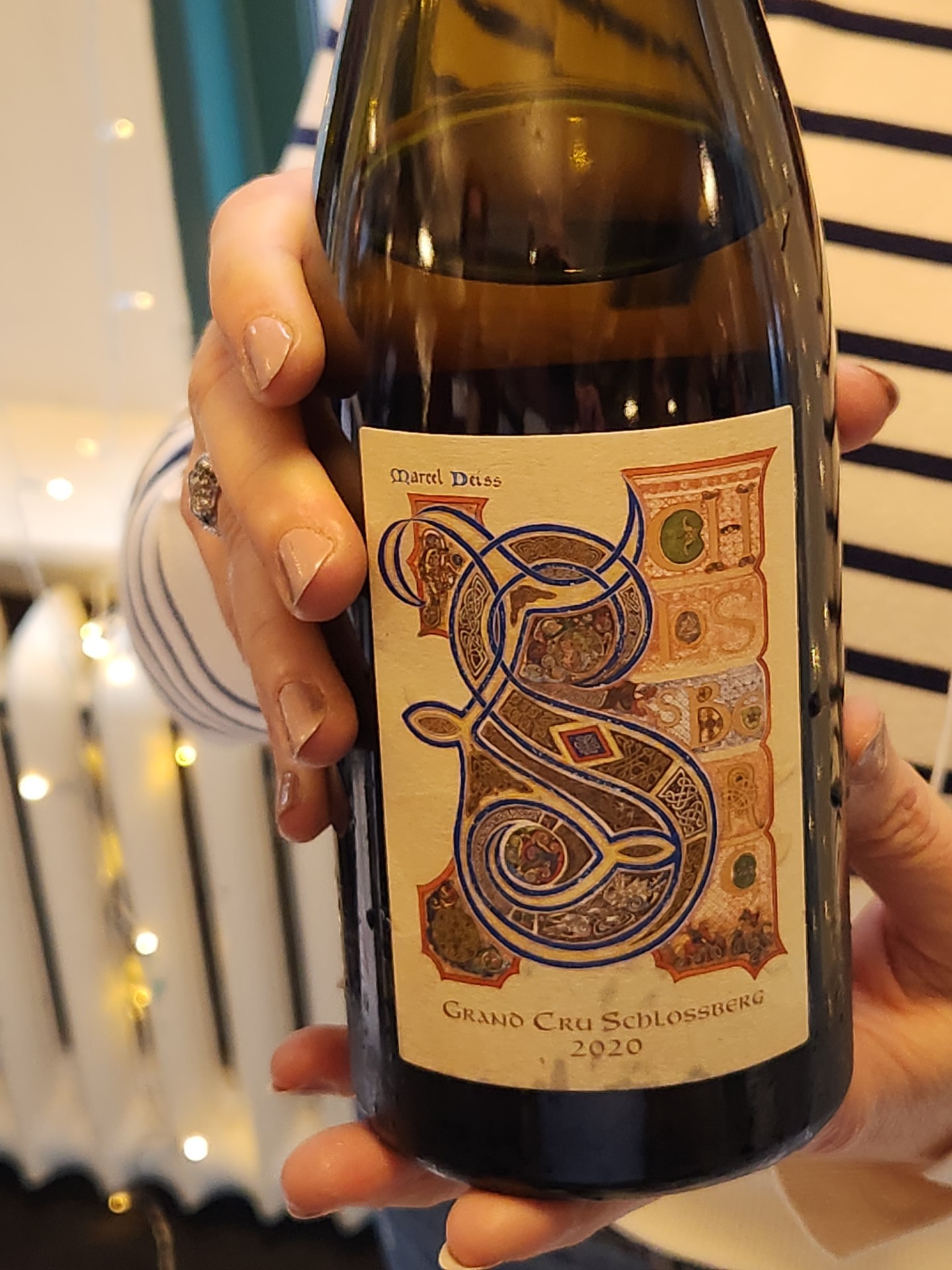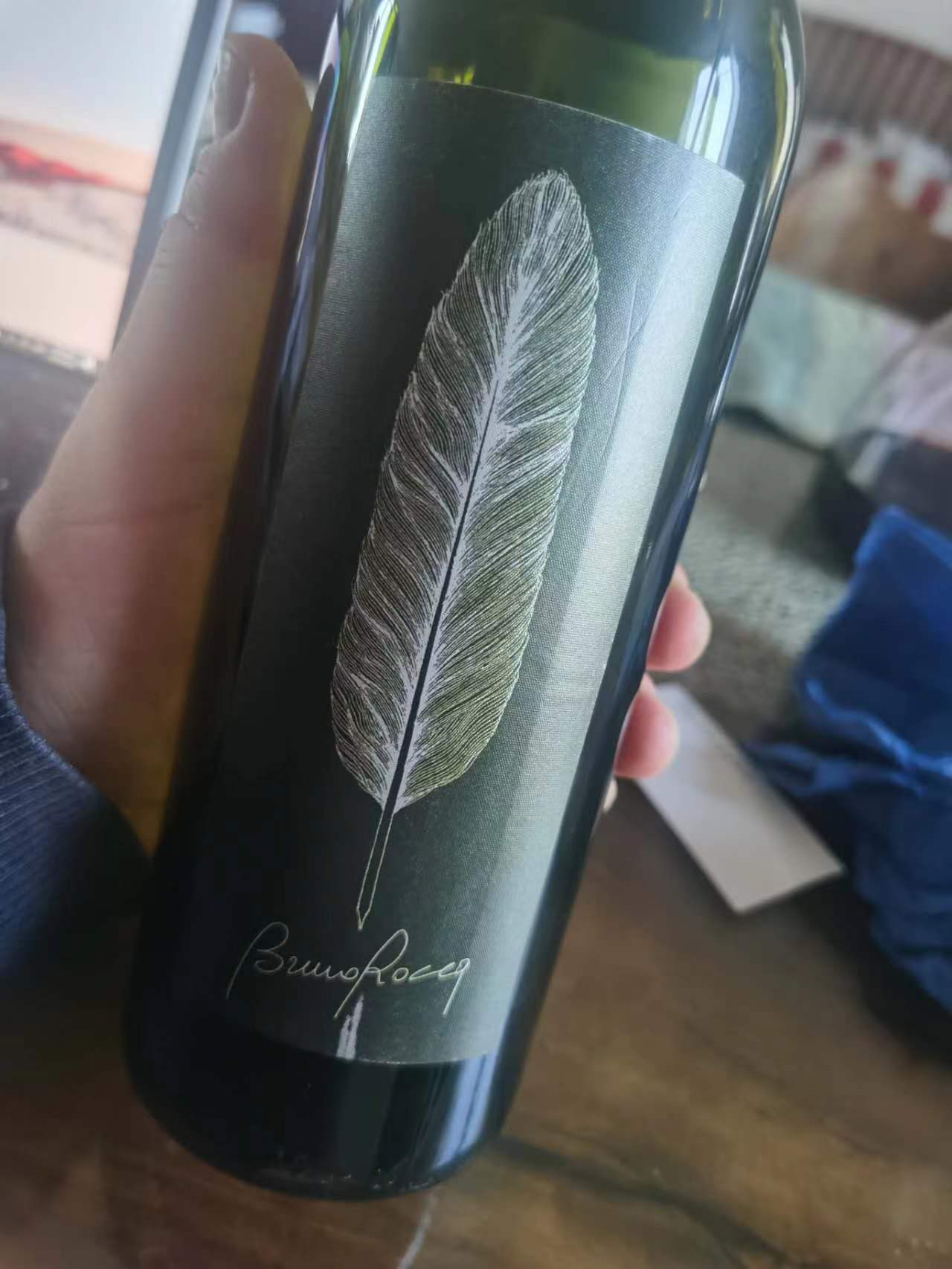Marcel Deiss 2020 Schlossberg Grand Cru Alsace 95
by Robert Millman

Not so long ago, Marie-Hélène Deiss was in New York. She brought with her eleven wines from the famous domaine in Bergheim, Alsace, much to the delight of a group of experienced tasters. The wine of the afternoon, among quite a few of us, was the most recent addition to the Deiss portfolio: The Grand Cru Schlossberg. This is now the fourth Grand Cru in the Deiss portfolio which also includes seven Premier Crus—(although there is no official Premier cru classification as such yet, they have been working on one for some years.)
At Deiss, practically all the wines are bottled as field blends. Unlike his peers, Jean-Michel Deiss and his son Mathieu re-activated the original way of local agriculture and winemaking which emphasizes place (lieu in French) over variety. The estate farms whatever grapes grow in a given vineyard. No effort is made to sculpt the wine to a pre-conceived notion of what the resulting wine should be, for allowing the vineyard to speak as a whole is the consistent idea. This is terroir according to the Deiss website: far more comprehensive than most notions of terroir. Biodynamic farming practices simply allow all the central and peripheral aspects of terroir to express themselves. When you taste through this broad range of Deiss wines you are struck but the remarkable differences among the wines. Each wine is a synthesis of site, multiple varieties, wind, mesoclimate, gentle farming and the ineffable judgment as to when to pick grapes. Not so easy to understand for the wine public, the Deiss wines are connoisseur wines in the best sense of that phrase. Once you get used to their inimitable tastes and textures, you may find many other Alsatian wines to seem monotonal.
The first release of the Deiss Schlossberg wine was the 2018. The vineyard itself is the largest grand cru in Alsace—over eighty hectares. Like all huge vineyards, its composition is highly varied as is the quality of the wines produced under that name. For example, Domaine Weinbach makes two dry Schlossberg’s—one from the lower parcels of their holding and one from the middle which is bottled as Schlossberg Cuvée Catherine. The latter is a true Grand Cru and far superior to the other bottling. Location, location, location! Back to the Deiss version. The vines were planted between 1977 and 1997. The soil is delicately fractured granite. This is probably as close to a monovariety wine—Riesling this case—as one will even find at Deiss. Deiss does not disclose varietal composition percentages. That is against their whole sensibility. This was my first time tasting the Deiss Schlossberg. I was dumbstruck (not something that happens to me frequently). After all those delicious, intense, elegant Premier Cru wines, the density, weight, palate expansion of this particular wine defines the difference between a Premier and a Grand Cru. One could say that this is a mutli-terroir wine which captures several different types of sandstone decomposition. This is in keeping with the Deiss notion of focal and peripheral terroir factors. The wine moves between peach, pear, citrus and as typical of the Deiss wines, penetrating acidity. One feels the rocks and sand underpinning the fruit. This is a demanding wine. Charm is not a central attribute of the Deiss wines. Here the austerity is lifted to the level of eloquence. Best to give the wine a few more years to develop. Drinking window: 2026-2035.
Bruno Rocca 2004 Barbaresco Maria Adelaide 95
by Ian D’Agata

This 2004 Barbaresco hails from a moment in time when the always-stunning wines at Bruno Rocca were far more marked by toasty barrique notes than they are today; and yet it is so graceful and well-balanced it might as well have been made by Bruno’s son Francesco. The Maria Adelaide bottling is named after Bruno’s mother; it has always been considered the estate’s flagship wine, made from the best grapes sourced in all of the winery’s vineyards.
Deep red with no hint of garnet. Perfumed, complex, very pure and nuanced nose of red cherry, licorice, aromatic herbs, violet, rose and a hint of cocoa, which is a telltale sign of Rabajà grapes. Then more nuance and grace in the mouth, with red and dark cherry flavours complemented by hints of menthol and candied rose petals. The finish is very long and extremely silky, leaving an impression of noteworthy refinement. This is a truly drop-dead gorgeous Barbaresco from an outstanding if initially slightly overrated vintage. Drinking window: 2024-2039.

 中文
中文



